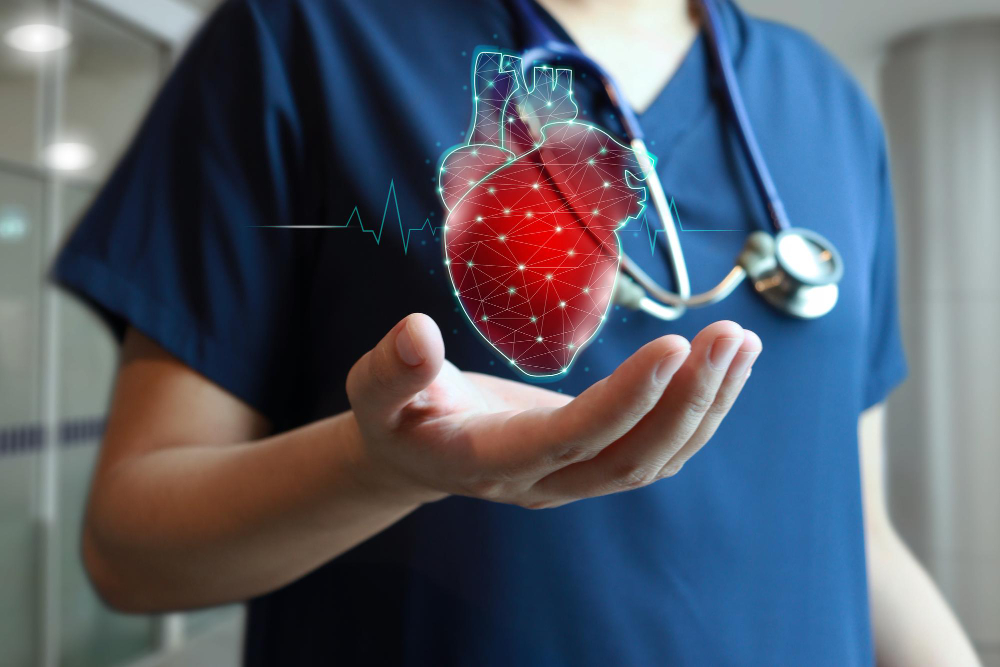
Understanding the Heart-Lung Connection: Why Breathing Impacts Your Heart
When you take a breath, you may not realize how closely this simple act is connected to your heart’s function. The lungs and heart are deeply intertwined, working together to deliver oxygen to your body and remove carbon dioxide. At Horizon Hospital, we help patients understand how respiratory and cardiovascular health go hand in hand—and why even subtle breathing changes can affect your heart.
In this blog, we’ll explore how the heart-lung connection works, why breathing impacts your heart, and what signs and symptoms you should watch for. We’ll also share tips to support both organs and when to seek medical attention.
The Heart-Lung Connection: A Vital Partnership
Your heart and lungs form the core of the cardiopulmonary system. Their combined function is essential for life, enabling your body to absorb oxygen and release waste gases.
Here’s how they work together:
- You inhale oxygen-rich air into your lungs.
- Oxygen travels to small air sacs (alveoli) and passes into surrounding capillaries.
- The oxygen binds to hemoglobin in red blood cells.
- This oxygenated blood is carried to the left side of the heart, which pumps it throughout the body.
- After delivering oxygen to tissues, the deoxygenated blood returns to the right side of the heart.
- The heart then sends this blood back to the lungs to release carbon dioxide and absorb more oxygen.
If either the heart or the lungs is impaired, the other organ must work harder to compensate—often leading to serious health issues.
Why Breathing Impacts Heart Health
Breathing directly affects how efficiently your heart can function. Here’s why:
1. Oxygen Supply and Heart Workload
When your lungs are unable to bring in enough oxygen—due to illness, injury, or poor lung function—your heart must work harder to pump oxygenated blood to the rest of the body. Low oxygen levels (hypoxia) can lead to:
- Pulmonary hypertension
- Right-sided heart failure (cor pulmonale)
- Increased heart rate and blood pressure
- Fatigue and reduced physical stamina
2. Breathing Patterns Affect Nervous System Balance
Breathing influences your autonomic nervous system, which regulates heart rate and blood pressure.
- Slow, deep breathing activates the parasympathetic nervous system, promoting relaxation and lowering heart rate.
- Rapid or shallow breathing, often seen in anxiety or lung conditions, can overstimulate the sympathetic system, increasing cardiac stress.
3. Sleep-Disordered Breathing and Heart Strain
Obstructive sleep apnea causes repeated pauses in breathing during sleep. Each pause drops oxygen levels and puts pressure on the heart to compensate. Over time, untreated sleep apnea may lead to:
- High blood pressure
- Atrial fibrillation (irregular heartbeat)
- Stroke
- Heart failure
Conditions Where the Heart-Lung Link Is Critical
Several health conditions highlight the importance of the cardiopulmonary relationship. When one system fails, the other is often affected.
Chronic Obstructive Pulmonary Disease (COPD)
COPD narrows the airways, making it difficult to breathe and reducing oxygen intake. Over time, the heart has to work harder, especially the right ventricle, potentially leading to cor pulmonale.
Heart Failure
When the heart can’t pump blood effectively, fluid backs up into the lungs (pulmonary edema), causing difficulty in breathing, coughing, and fatigue.
Pulmonary Embolism
A blockage in a lung artery (usually from a blood clot) sharply reduces oxygen levels and places extreme strain on the right side of the heart, often requiring emergency treatment.
Interstitial Lung Disease (ILD)
These diseases cause scarring of lung tissue, impairing gas exchange and forcing the heart to work harder, which may lead to right-sided heart failure.
Congenital Heart Defects
Structural problems in the heart can disrupt normal blood flow between the lungs and the rest of the body, sometimes requiring surgical repair early in life.
Signs and Symptoms to Watch For
If your heart or lungs are under strain, the signs often appear in your breathing, circulation, and overall energy levels. Pay attention to the following:
- Persistent shortness of breath, especially during activity or while lying down
- Chest discomfort or tightness
- Unexplained fatigue
- Swelling in the ankles or legs
- Chronic cough or wheezing
- Bluish tint to lips or fingertips (cyanosis)
- Episodes of irregular heartbeat or rapid pulse
These symptoms should never be ignored. Early diagnosis and intervention can prevent complications and improve your quality of life.
How to Support Both Lung and Heart Health
Healthy habits play a vital role in protecting your cardiopulmonary system. At Horizon Hospital, we emphasize a holistic approach to prevention and recovery.
Quit Smoking
Smoking is the leading cause of both lung disease and cardiovascular problems. Quitting smoking reduces your risk of heart attack, stroke, COPD, and lung cancer.
Maintain an Active Lifestyle
Regular exercise improves lung capacity and strengthens your heart muscle. Activities like walking, swimming, or cycling help keep both systems functioning efficiently.
Eat a Balanced Diet
A heart- and lung-friendly diet includes:
- Fresh fruits and vegetables (especially leafy greens and berries)
- Whole grains like brown rice and oats
- Lean proteins such as fish and legumes
- Low-sodium, low-sugar options
- Plenty of water for hydration
Manage Chronic Conditions
Conditions like asthma, hypertension, diabetes, and high cholesterol must be managed with regular check-ups and medications as prescribed.
Practice Breathing Exercises
Breathing techniques can help improve oxygenation and lower heart rate. Consider:
- Diaphragmatic breathing
- Pursed-lip breathing
- Mindful or guided breathing for stress management
Avoid Exposure to Pollutants
Airborne irritants can worsen both heart and lung conditions. Use masks when necessary, avoid smoking areas, and install air purifiers at home if needed.
Get Recommended Vaccinations
Vaccines for flu, pneumonia, and COVID-19 can prevent infections that stress both the lungs and heart—especially in older adults or those with chronic illnesses.
Diagnostic Tools Used at Horizon Hospital
Our state-of-the-art diagnostics help us assess heart-lung interaction and guide treatment plans:
- 2D Echocardiogram: Visualizes heart structure and function
- Pulmonary Function Test (PFT): Measures lung capacity and airflow
- High-Resolution CT Scan (HRCT): Detects structural lung changes
- Electrocardiogram (ECG): Identifies arrhythmias or cardiac strain
- Sleep Study (Polysomnography): Evaluates for sleep apnea and nocturnal hypoxia
- Stress Test: Assesses how the heart performs under exertion
Early detection through these tests allows for timely, targeted intervention to protect both organs.
When to See a Specialist
You should consider seeing a cardiologist or pulmonologist if you:
- Experience frequent shortness of breath or chest discomfort
- Have a known lung condition like asthma or COPD
- Have been diagnosed with heart failure or irregular heartbeats
- Snore heavily or suspect sleep apnea
- Struggle with fatigue or low exercise tolerance
At Horizon Hospital, our integrated cardiopulmonary care model ensures patients receive comprehensive, collaborative treatment tailored to their condition.
Conclusion: Breathe Better, Live Better
Your heart and lungs form a powerful partnership—working together with each beat and breath to sustain life. Disruptions in breathing can signal cardiac stress, while heart issues can impair lung function. Understanding this vital relationship empowers you to take better care of both.
If you’re noticing changes in your breathing, energy levels, or circulation, don’t wait. The specialists at Horizon Hospital are here to evaluate your symptoms and help you take proactive steps toward healing.
Schedule Your Consultation Today
Concerned about your breathing or heart health? Book an appointment with our Cardiology and Pulmonology experts at Horizon Hospital and receive the care you need to breathe easy and live strong.







